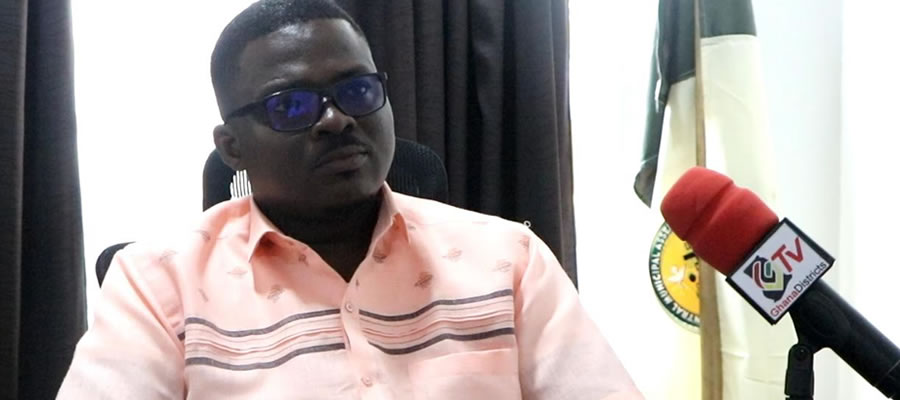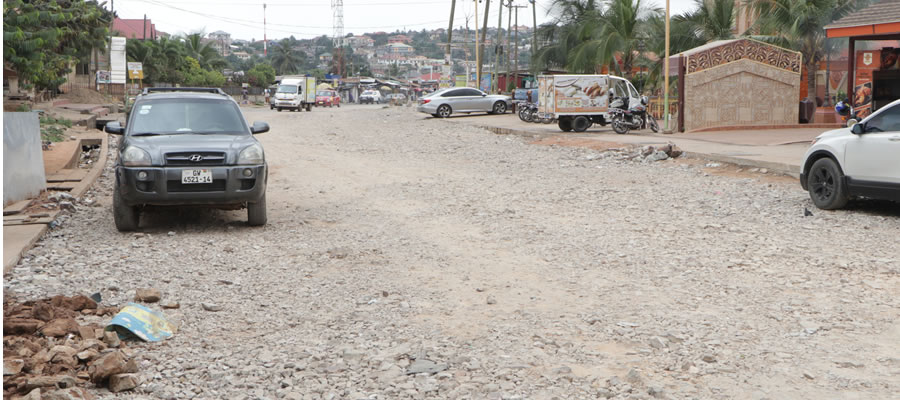

Introduction
It is very important to develop a mechanism or strategy for conveying the information in the reports to all the various actors. The reporting system adopted for institutions is very different from that of the local communities.
The GCMA has made its vision to facilitate development and delivery of socio-economic infrastructures to its citizens. This requires the Assembly to be in constant interaction with all stakeholders. The planning process, organization of implementation as well as assessing impact and outcomes of development intervention demands a dynamic communication strategy.This chapter therefore defines the Assembly’s communication strategy for the aforementioned activities.
Development of the Communication Strategy
The MPCU in collaboration with the Assembly’s Public Relation Unit and the Municipal Information Unit worked together to develop a communication strategy to disseminate its development activities. This is to ensure that the Assembly communicates effectively to influence decision and also solicit citizen’s participation in governance. The critical issues that were considered included the following.
What need to be communicated,
The aims of the strategy.
- Stakeholders interest,
- The communication tools to be used
- Communication channel
- Timeframe for dissemination
- Financial implication.
- Feedback mechanisms.
What need to be Communicated to Stakeholders
The Assembly recognizes the varied information needs of stakeholders and will therefore communicate exactly what they need. In view of this therefore the elements of developments that stakeholders may be interested were identified and are listed below.
Ongoing projects.
- Report on completed projects.
- Revenue mobilization
- Level of MTDP implementation.
- Challenges and efforts made to address them.
- Aim(s) of the Communication Strategy
The objective of the strategy is to influence decision and also ensure citizen participation in development and local governance. It is the achievement of this objective that the overall goal of all inclusive and sustainable development can be achieved.
Stakeholders Interest
Since each target group or individuals have specific characteristics and information required, the MPCU classified the stakeholders into internal target groups and external target groups / individuals. This will ensure the selection of effective communication tools and channels and provide the much needed feedbacks.
Internal Stakeholders
The internal stakeholders of the Municipal Assembly were identified as follows.
Local communities/ unit committees
- Assembly Members.
- Member of Parliament.
- Heads of Departments.
Local Associations, CSO, individuals (residents association NGOs CBOs etc.)
External Stakeholders
The external stakeholders in the Assembly’s development efforts were identified and included but not limited to the under listed.
- National Development Planning Commission.
- Ministry of Local Government and Rural Development
- Regional Coordinating Council
Donors.
Communication Tools
A number of communication tools were identified by the MPCU to relay to the stakeholders. The cost involved in the application of these tools dictates how often the Assembly will use that particular tool to communicate.
Annual Progress Reports
- Newsletters
- Flyers
- TV documentation
Communication Channels.
Communication channels are critical to ensure effective communication to targeted audience. The channels that will be used to communicate the various elements of the municipality’s development issues were carefully selected and include the under listed.
Quarterly meeting.
- Mid- year/Annual review meetings
- General Assembly meetings
- Zonal council level and stakeholders meetings
- Electronic/Print media
Time Frame
The frequency of the meetings will depend on the stakeholders being targeted. It is however anticipated that meetings will be organized monthly, quarterly, Mid-year and annually.
Financial Implication
The coat of implementing the communication strategy will be financed from the Assembly’s Internally Generated Fund. It is important to state that the communication tools identified and its cost implication will inform the frequency of its use.
Feed Back Mechanism
The feedback from the various meetings will be collated from the Zonal Councils and the Public Relations and Complaint Committee of the Assembly.
Transport
Transportation is a major economic activity in the municipality connecting it to the other parts of Accra and the country. Commercial transportation is by vehicles, taxis and others. There are about thirty seven (37) Transport Union Operators.
Cooperatives and Other Economic Groupings
The municipality has co-operative societies and women’s groups that are engaged in various economic activities and skills training for its members. There are also a number of market women’s associations, Drivers Associations, farmer groups, dressmakers and beauticians associations among others.
ICT
Information and Communication Technology (I.C.T.) is described as the Technology that aids the creation and manipulation of Information and Communication hence it is concerned with the storage, retrieval, manipulation, transmission or receipt of data. The role of I.C.T in the socio-economic transformation of all aspects of Man’s life cannot be over emphasized.
As a result, the Government deemed it proper to introduce I.C.T as one of the teaching and examinable subjects in the Pre-Tertiary Institutions in the Country with effect from the inception of the New Educational Reforms in September, 2007. Information and Communication Technology (I.C.T.) makes possible what is referred to as Globalization- a situation whereby all Countries in the World seem to look like a small Community where news or any event or happening quickly reaches the Members of the Community.
Positive Effects of I.C.T. in schools
1. Acquisition of Knowledge on any subject from the INTERNET.
2. Promotion of Electronic Learning (that is Distance Learning) leading to acquisition of Academic Certificates and Degrees at one’s own convenience.
3. Registration of Basic Education Certificate Examination Candidates on-line.
4. Promotion of Cultural Exchange.
5. E-mails are made possible through the INTERNET.
6. Leads to the introduction and use of mobile phones.
Challenges in the development/ teaching of I.C.T. in GCMA schools
1. Lack of adequate qualified trained Teachers to handle the teaching of I.C.T. in Schools.
2. Lack of Computers in the Schools example; out of the five hundred and ninety six (596) Schools in the GCMA Municipality only few has computers even without proper computer laboratory.
3. Lack of electricity in many schools.
4. Lack of I.C.T Teaching and Learning materials e.g. computers, text books, etc.
5. Lack of I.C.T. Centers/Laboratories.
Investment
1. Capacity training for Teachers/Staff in the education directorate in I.C. T.
2. Building of structures/setting up of Computer Laboratories in the Schools.
3. Procurement of Teaching and Learning Materials for I.C.T.
4. Every Child should have a computer hence the Government Policy of “one (1) child one (1) Laptop” should be enhanced.
5. For cost minimization, there should be a central computer laboratory for each of the four (4) electoral areas.
Date Created : 11/17/2017 8:43:08 AM













 facebook
facebook
 twitter
twitter
 Youtube
Youtube
 +233 593 831 280
+233 593 831 280 0800 430 430
0800 430 430 GPS: GE-231-4383
GPS: GE-231-4383 info@ghanadistricts.com
info@ghanadistricts.com Box GP1044, Accra, Ghana
Box GP1044, Accra, Ghana